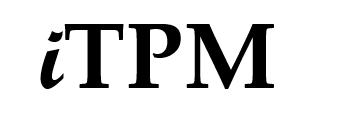To define an indirect customer, it’s helpful to start with the definition of a direct account. If you are a CPG manufacturer or distributor, you sell and ship products to your customers. By definition, these customers are direct accounts.
Some of the retailers that sell your product don’t buy directly from you, they buy from a distributor or a re-distributor. Retailers and other entities that sell your products but don’t buy directly from the manufacturer are defined as indirect customers.
What’s the difference?
From a manufacturer perspective, managing trade promotions and rebates for direct accounts is different for indirects.
| Manufacturer’s perspective: | Direct Customers | Indirect Customers |
| Shipments | You know exactly what you’ve shipped | Unknown. The indirect customer buys your products from a distributor or re-distributor. |
| Off-invoice allowances | You know what qualifies for your off-invoice allowances | Not available as a method-of-payment |
| Bill-Back allowances | You know what qualifies for your bill-back allowances | You can offer a bill-back, but you have no visibility unless the distributor shares withdrawal data, or you obtain syndicated or POS data. |
| Latest Estimate and forecast of Trade Spending | You can use shipments to update your lastest estimate of trade spending for more accurate accruals with fewer surprises. | Use your original planned spending as your LE. If you use withdrawal data, POS and syndicated data to update your LE, beware of challenges. |
One difference in the above table is obvious. If you don’t ship directly to a customer, you can’t offer an off-invoice and apply it to an invoice…. You don’t invoice that customer!
However, what might not be as obvious are the challenges with using current data to update your trade promotion spending LE’s, or Latest Estimates. The Latest Estimate is your best guess of the total trade spend for an event. You may plan to ship 1,000 cases at $1.00 per case, but what if the deal is over and you already know you shipped 1,500 cases that qualify for the bill-back allowance? You need to update your future view of your trade spending. We call that the Latest Estimate. For direct accounts, it’s the best way to prevent spending surprises and end the year knowing what your final trade spend will be for the year after all year’s events are paid and closed.
But what about Indirects? How can you estimate your trade promotion spending?
| Methodology | Pros | Cons |
| Use the planned spend until you get the claim | You have the original planned amount that was approved. | You have no visibility to unexpected under or over spends until they occur. |
| Use POS, syndicated data like IRI and AC Nielsen, or warehouse withdrawal data to revise your estimate. | Using third-party data as a substitute for shipment data can provide advanced warning of trade promotion surprises before the claim. Example, a scan promotion was forecast at 30,000 consumer units, but movement data shows 120,000 units. Big surprise averted! |
Access to these data sources tend to be delayed by 4 weeks or more. Each source has different data mapping challenges and formats, requiring constant attention and effort. Mapping can be a challenge, even with good data. i.e., open stock vs. mixed shippers, etc. |
Your mix of direct and indirect accounts is generally driven by your CPG category and division. As a general observation, CPG foodservice trade promotion is mostly indirect, with operators buying from distributors. CPG retail trade promotion for many categories is mostly direct, with many manufacturers selling 60% or more of their volume directly to large retailers.
Whether your business is mostly direct, indirect, or a mix of both, you will still benefit from using a trade promotion solution. If you ERP is NetSuite, please include iTPM in your vendor review process.
Alex Ring
President
CG Squared, Inc.
